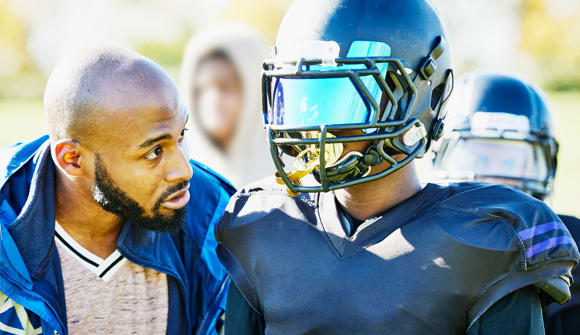Ruled out
New concussion protocol for professional football players.
Article Author: Johnny Woodhouse
Article Date:

When Miami Dolphins quarterback Tua Tagovailoa suffered two concussions in the span of five days, it exposed an apparent deficiency in the National Football League’s (NFL) complex concussion protocol process – a series of steps players must take before returning to the field.
Any NFL player suspected of sustaining a concussion in a game can resume play after passing a sideline checklist of five “no-go” symptoms, including loss of consciousness, amnesia and gross motor instability.
Tagovailoa exhibited the physical signs of gross motor instability following his first apparent concussion, but because it was deemed not to have a neurological cause, he was able to return to the game.
Days later, the quarterback suffered a second in-game concussion, with the terrifying scene playing out on the TVs of millions.
All about ataxia
Based on Tagovailoa’s injuries, the league amended its concussion protocol by removing gross motor instability from the list of mandatory no-go symptoms and adding ataxia.
Ataxia is defined as abnormality of balance/stability, motor coordination or dysfunctional speech caused by a neurological issue. It results from damage to the part of the brain that controls muscle coordination. Repeated blows to the head can cause it, along with other conditions like multiple sclerosis.
Ataxia may cause difficulty with:
- Walking and balance
- Hand coordination
- Speech and swallowing
- Eye movements
According to the Centers for Disease Control and Prevention (CDC), there is growing concern about the long-term effects of repeated head injuries on the brain.
A person with a history of multiple concussions may:
- Experience a longer recovery or more severe symptoms
- Have long-term problems, including difficulty with concentration and memory, headaches and poor balance
PCS versus CTE
Since its enactment, the so-called “Tua rule” has resulted in several NFL players being removed from games after exhibiting ataxia.
Athletes of any age – not just those at a professional level – who have suffered from a concussion should see a neurologist for additional testing to determine if they have a condition called post-concussion syndrome (PCS), which occurs when concussion symptoms last beyond the normal course of recovery. People with PCS can experience symptoms while at rest or in response to too much physical activity.
Unlike chronic traumatic encephalopathy (CTE), a progressive degenerative brain disease caused by repeated head impacts, PCS gets better over time and in most cases eventually clears completely.
“Most concussions usually resolve in about seven to 10 days, but some athletes may take up to two to four weeks to return to normal,” said Bob Sefcik, a certified athletic trainer and executive director of the Jacksonville Sports Medicine Program. “If an athlete reports any symptoms of concussion, he or she should be immediately removed from play and evaluated by a medical professional before participating in any further athletic activity.”
“When in doubt, sit them out,” he added.
In the case of a suspected concussion, go to the nearest Emergency Center to get checked out by a qualified health care provider. To view current wait times, click here.



